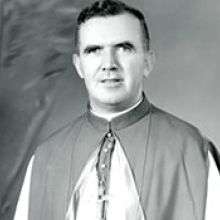In December 1965, on the Feast of the Immaculate Conception, the Second Vatican Council, popularly known as Vatican II, finished its work.
Pope John XXIII began this effort, and the Vatican II sessions began in Rome in October 1962. The pontiff would die in 1963, in the middle of the council sessions, and his successor, Pope Paul VI, would preside over the completion of Vatican II.
Seven Columban bishops were invited to and attended the Vatican II sessions in Rome: Henry C. Byrne, Patrick Cleary, Patrick H. Cronin, John Dooley, Harold W. Henry, John J. Howe and Thomas Quinlan.
They witnessed the historic modernizing changes to the Catholic Church that Vatican II wrought, including a recognition that there was a mixture of good and bad both inside and outside the Church, the saying of the Mass in vernacular languages and greater dialogue with other religions.
This last aspect of Vatican II might have been the greatest help to the Columbans, as greater ecumenism would facilitate their missions in majority non-Christian countries.
Vatican II brought the Church into greater dialogue with the modern world, and it would have positive implications for the Columbans as well.
